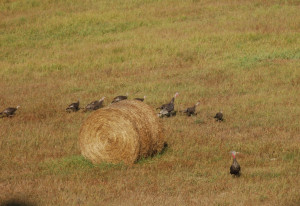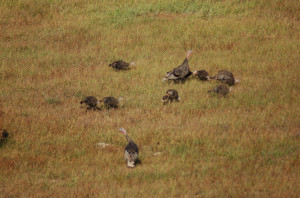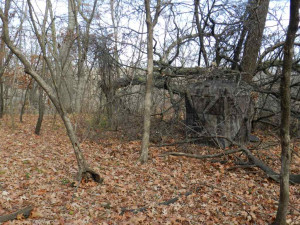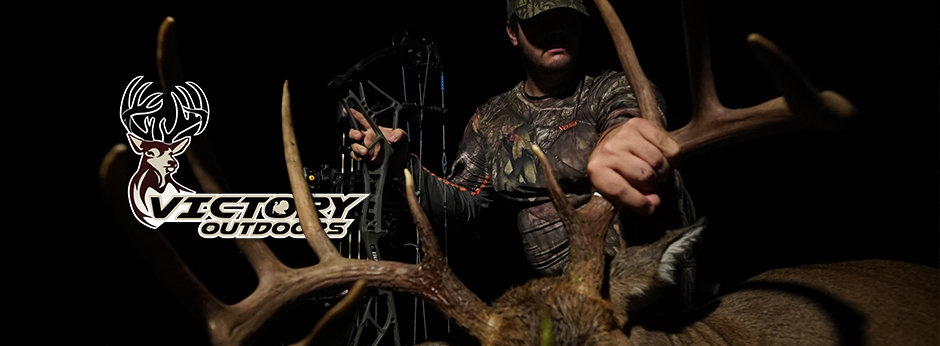 It’s November, the rut is ON! Every hunter in the woods is chasing deer. Unless of course you have the fortune of already wrapping your tag around the antler of a mature buck; so now what do you do? Turkey hunting is a rich tradition in the fall hunting woods, and in many states it’s legal to hunt with archery or firearm. In fact fall turkey hunting was a mainstay before spring hunting gained popularity in the modern age of chasing long beards. If you are a spring turkey hunter, you already have everything you need to hunt turkeys in the fall. Following are my three favorite tactics to use for fall timber ghosts.
It’s November, the rut is ON! Every hunter in the woods is chasing deer. Unless of course you have the fortune of already wrapping your tag around the antler of a mature buck; so now what do you do? Turkey hunting is a rich tradition in the fall hunting woods, and in many states it’s legal to hunt with archery or firearm. In fact fall turkey hunting was a mainstay before spring hunting gained popularity in the modern age of chasing long beards. If you are a spring turkey hunter, you already have everything you need to hunt turkeys in the fall. Following are my three favorite tactics to use for fall timber ghosts.
Roosting: finding a flock of turkeys is far easier than finding a single gobbling tom in the spring. Turkeys are somewhat creatures of habit; they have annual routines that have been followed for years in some turkey woods. Dominate hens will feel safe in areas they were taken when they were yearlings: in turn they took their brood to this same area and so on. If you are a deer hunter and see turkeys while deer hunting you already have an idea of where to start looking. Start in these areas, making adjustments as the turkeys move toward roosting areas. If you pattern them to roost, hunt them right off roost in the morning using traditional calling tactics you would use in spring.
Busting the flock: This is a tried and true tradition of fall turkey hunters, and is exactly as it sounds. Flocks in the fall can vary from just a few to up to a hundred or more. Larger flocks will be made up of all social classes of birds, young and old. Finding one of these large flocks in an open or semi open area, then purposefully rushing or running straight into the flock to scatter them in as many directions as possible; then follow closely in the direction of the largest portion of the flock. Move quickly about 100-200 yards and set up. Start calling using an assembly yelp of 25-30 excited yelps. If you are hunting with a partner, have them use a kee kee, and kee kee runs from 30-40 yards off. Turkeys will start to return in quick fashion.
 Food sources: if you have your area scouted previously, a known food source is always a good bet for fall turkeys. There will often be large flocks that will visit the same agricultural crop fields day after day at the same times. They become easily patterned. Don’t be afraid to implement a blind in the middle of an open field. Turkeys have not learned to associate a blind in the middle of a field with danger as deer have yet. A well placed blind can put you within easy shooting range, especially if you would like to attempt to harvest a bird with archery equipment. I use as many decoys as I have when set up in a field blind like this. Set them up from 5-10 yards from the blind facing away from the area you believe the turkeys will be entering the field in a staggered line or half circle. Make sure to get in early if you are going to use a blind, at least an hour before the turkeys will enter the field. Bring a book or a notepad and make use of your time. Chances are you will be carrying home your Thanksgiving meal.
Food sources: if you have your area scouted previously, a known food source is always a good bet for fall turkeys. There will often be large flocks that will visit the same agricultural crop fields day after day at the same times. They become easily patterned. Don’t be afraid to implement a blind in the middle of an open field. Turkeys have not learned to associate a blind in the middle of a field with danger as deer have yet. A well placed blind can put you within easy shooting range, especially if you would like to attempt to harvest a bird with archery equipment. I use as many decoys as I have when set up in a field blind like this. Set them up from 5-10 yards from the blind facing away from the area you believe the turkeys will be entering the field in a staggered line or half circle. Make sure to get in early if you are going to use a blind, at least an hour before the turkeys will enter the field. Bring a book or a notepad and make use of your time. Chances are you will be carrying home your Thanksgiving meal.
Turkey hunting is just one more way to enjoy the fall season if you have tagged out on your deer. Tags are usually available and rather inexpensive. Don’t kid yourself into thinking this will be easy, and you don’t need to bring your “A” game. Turkeys are still turkeys. Good luck and have some fun!














